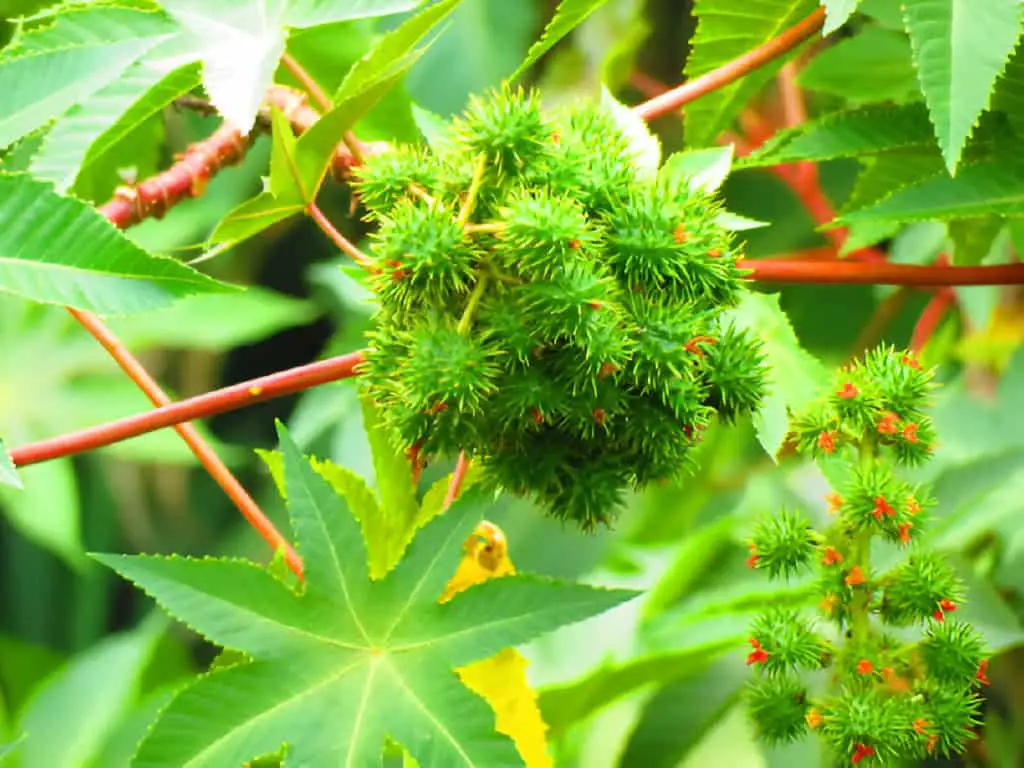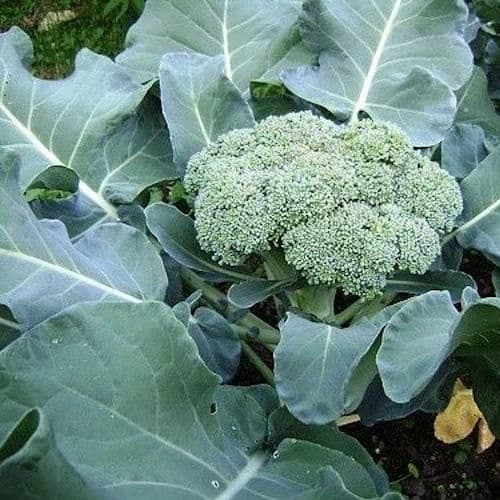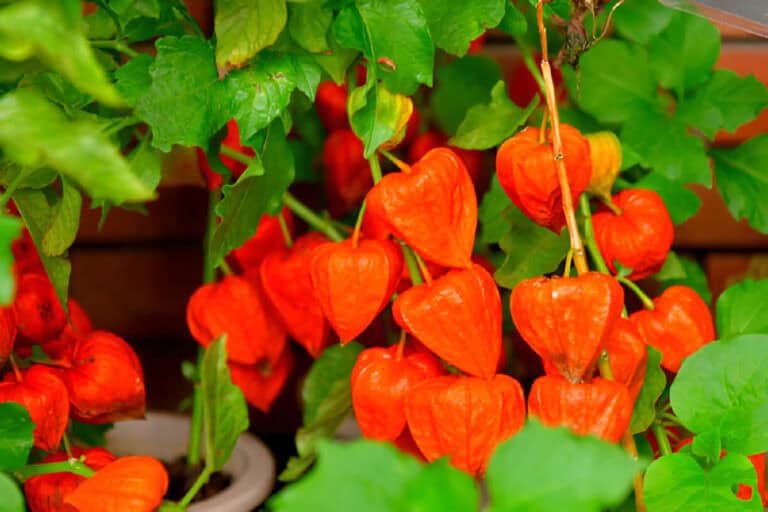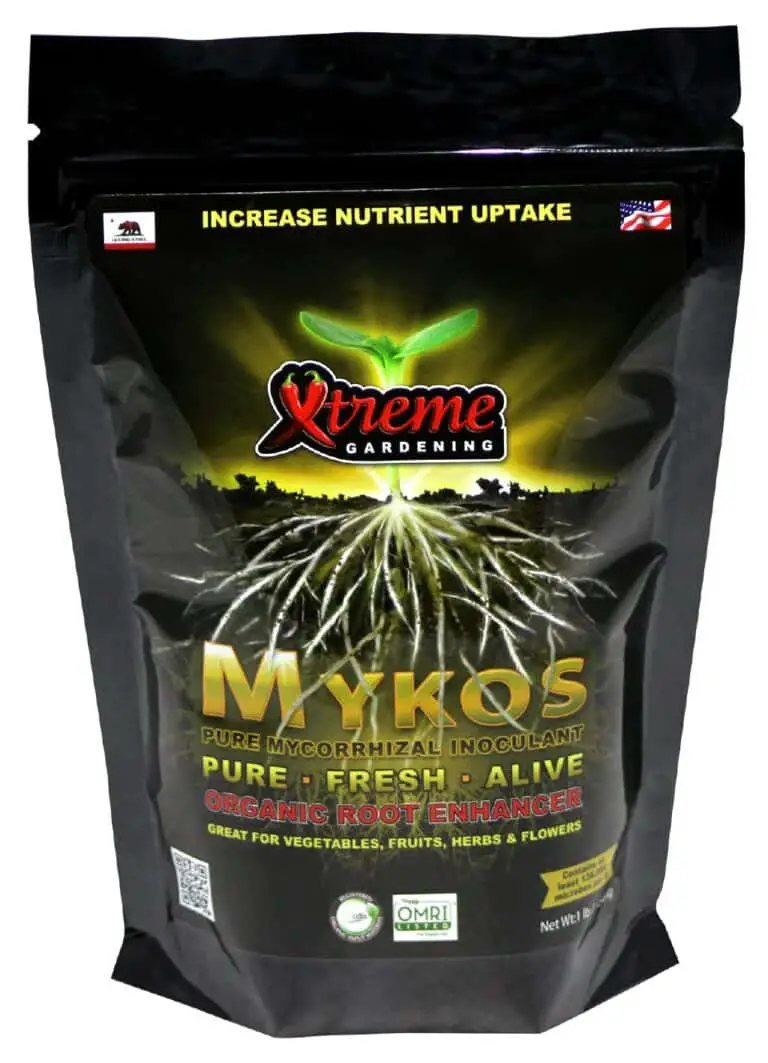How to Prune Castor Oil Plant – Beginners Trimming Guide

Pruning a castor oil plant is hard. It’s also known as Ricinus communis. This is because it grows fast and has large leaves. Have you ever wondered how proper pruning techniques can enhance the health and appearance of your castor oil plant?
In this article, we’ll explore the best methods for trimming and maintaining these striking plants. By following our expert advice, you’ll ensure that your castor oil plant thrives. This will result in a robust, attractive garden centerpiece.
Read on to learn how strategic pruning can transform your plant care routine and maximize the beauty of your garden.
Understanding the Castor Oil Plant
The Castor Oil plant is known for its large, glossy leaves and rapid growth. It can quickly become unruly if not properly maintained. Here’s why pruning is important:
- Promotes Healthy Growth: Pruning helps remove dead or diseased branches. This lets the plant focus on healthy, new growth.
- Enhances Aesthetic Appeal: Regular trimming keeps the plant looking neat and well-shaped.
- Controls Size: The plant can grow quite large; pruning helps manage its size, especially in a garden setting.
When to Prune Your Castor Oil Plant

Timing your pruning correctly is crucial for the plant’s health. Here are the ideal times to prune:
- Early Spring: Before new growth begins, perform major pruning to shape the plant and remove any winter damage.
- Mid-Summer: Light pruning during the growing season can help manage its size and encourage bushier growth.
- Late Fall: After the growing season ends, remove any dead or dying branches to prepare the plant for winter.
Tools You’ll Need
Gathering the right tools before you start will make the process smoother and more effective. Here’s what you’ll need:
- Pruning Shears: Sharp, clean shears are essential for making precise cuts.
- Loppers: For thicker branches, loppers provide the leverage needed.
- Gloves: Protect your hands from the plant’s toxic sap and any thorns.
- Disinfectant: Clean your tools before and after use to prevent disease spread.
Step-by-Step Pruning Guide
Step 1: Inspect the Plant
Start by thoroughly inspecting your Castor Oil plant. Look for:
- Dead or Diseased Branches: These should be your first priority for removal.
- Overgrown Areas: Identify branches that are overcrowding the plant.
- Crossing Branches: Branches that rub against each other can cause damage and should be pruned.
Step 2: Remove Dead or Diseased Wood
Use your pruning shears to cut away any dead or diseased branches. Make clean cuts just above a healthy leaf node to encourage new growth. Always disinfect your shears after each cut to prevent spreading disease.
Step 3: Thin Out Overcrowded Areas
Next, focus on areas where branches are dense and tangled. Thinning these areas improves air circulation, which is vital for preventing fungal diseases. Remove any weak or spindly branches as they don’t contribute significantly to the plant’s structure or appearance.
Step 4: Shape the Plant
Trim back branches to create a balanced, aesthetically pleasing shape. Aim for an open structure that allows light to reach all parts of the plant. This will help in promoting even growth and reducing the risk of diseases.
Step 5: Maintain Height
If your Castor Oil plant is becoming too tall, trim the top branches. This not only keeps the plant at a manageable height but also encourages it to grow bushier, resulting in a fuller appearance.
Step 6: Post-Pruning Care
After pruning, give your plant some extra care to help it recover:
- Watering: Ensure the plant is well-watered, but avoid waterlogging.
- Fertilizing: Apply a balanced fertilizer to support new growth.
- Monitoring: Keep an eye on the plant for any signs of stress or disease.
Pruning Schedule
Establishing a regular pruning schedule ensures your Castor Oil plant remains healthy and attractive. Here’s a suggested timeline:
| Season | Activity | Notes |
| Early Spring | Major Pruning | Remove dead wood, shape the plant |
| Mid-Summer | Light Pruning | Manage growth, remove problem branches |
| Late Fall | Cleanup | Prepare for the next growing season |
Tips for Effective Pruning
- Use Sharp Tools: Dull blades can tear the plant tissue, making it more susceptible to disease.
- Stay Consistent: Regular pruning is better than infrequent, heavy cuts.
- Clean Tools Regularly: This helps prevent the spread of diseases between plants.
- Observe Plant Response: Each plant may respond differently to pruning, so adjust your technique as needed.
Common Pruning Mistakes to Avoid
- Over-Pruning: Removing too much foliage at once can stress the plant.
- Ignoring Deadwood: Leaving dead branches can harbor pests and diseases.
- Incorrect Cuts: Cutting too close to the main stem can damage the plant.
Advanced Pruning Techniques
For those looking to take their pruning skills to the next level, here are a few advanced techniques:
- Heading Cuts: These cuts remove the tips of branches to encourage bushier growth. They are useful for shaping the plant and managing its size.
- Thinning Cuts: Thinning cuts remove entire branches back to the main stem or trunk. This technique is ideal for reducing density and improving air circulation.
- Crown Raising: Crown Raising involves removing the lower branches of the plant. This lifts the crown, providing more space underneath and improving light penetration.
| Read: Beginners Trimming Duranta Plant |
Seasonal Care and Pruning
Understanding the seasonal needs of your Castor Oil plant can enhance the effectiveness of your pruning efforts. Here’s a breakdown of seasonal care tips:
Spring
- Major Pruning: Focus on removing winter damage and shaping the plant.
- Fertilization: Apply a balanced fertilizer to support new growth.
- Watering: Increase watering as the weather warms up.
Summer
- Light Pruning: Manage the plant’s size and encourage bushier growth.
- Pest Control: Watch for pests and take action if necessary.
- Mulching: Apply mulch to retain moisture and regulate soil temperature.
Fall
- Cleanup Pruning: Remove dead or dying branches to prepare the plant for winter.
- Watering: Reduce watering as temperatures drop.
- Protection: Consider protecting the plant from early frosts if you live in a colder climate.
Winter
- Minimal Pruning: Only prune if necessary to remove damaged branches.
- Protection: In colder regions, protect the plant with a frost cloth or move it indoors.
- Monitoring: Keep an eye on the plant’s health and address any issues promptly.
Conclusion
Pruning your Castor Oil plant is a vital part of its care routine, ensuring it remains healthy, attractive, and well-managed. Follow this step-by-step guide. It will help you prune your plant with confidence. Pruning promotes strong growth and makes the plant more beautiful.
Regular, mindful pruning not only keeps your plant in shape but also boosts its health and productivity. Happy pruning!






